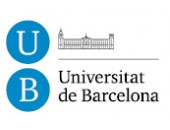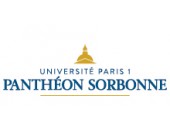Can New Cultural Institutions and Policies Contribute to the Equalization of Conditions in Europe? Cultural legitimacy, heritage and identity politics
Jean-Louis Fabiani (Central European University, Budapest) and Nasser Suleiman Gabryel (Cherpa, Institut d’études politiques, Aix-en-Provence
In the last fifty years, cultural institutions have been questioned from various points of view, as producing purely nationalist narratives, as controlling the interpretation of icons and texts through symbolic violence, as reproducing social and cultural inequalities instead of reducing them, and, even worse, excluding the minorities from the cultural feast. The relative inefficiency of democratizing cultural policies is well documented now, and new initiatives have been developed to answer part of the questions raised by social critique. It is too early to come to conclusions concerning the outcomes of the first institutional devices aiming to produce an inclusive European cultural community. In this paper we would like to delineate what we call the new landscape of cultural legitimacy in Europe. The assault on dominant forms of culture has not put an end to the claim for recognition. If the dividing line between dominant culture and other forms of expression has been moved and sometimes been blurred, this does not mean that we have constructed an equalitarian cultural public sphere. Our further contribution to the project will address this issue more concretely. For the time being, we need to explore the conceptual frameworks through which we think of cultural meanings, and assess their recent transformations. In our paper, we will move constantly from concrete examples to more theoretical assertions. Our aim is to come to grips to the main topic through case studies and observation.
This is why we start with a concrete example. Budapest, August 2015. Sziget Festival. A cosmopolitan crowd of young people, coming mostly from Europe, rallied in Sziget Island, with the purpose to enjoy night and day a large offer of international popular music. Small groups waved large national flags or were clad in their country colors. They did not stop waving them during the concerts that could last for ninety minutes or more. When asked to interpret the gesture, organizers and older observers answered that it was not a nationalist statement, but rather the display of a sense of belonging and a way of being identified by others in a friendly way. No need to say that no European flag was waved in what remains one of the most important gatherings of European youth, Eastern and Western. In the meantime, the refugee crisis intensified and the Hungarian government decided to erect a wall made of barbed wire to stop the influx of migrants from Serbia. As the young and well-groomed young people were warmly welcomed at the festival gate, the government subsidized huge posters along the highways expressing their discontent with the migrants. The conflation of those two images is an apposite symbol of what might be called the present cultural situation of Europe. On the one hand globalized cultural industries provide the public with a cosmopolitan offer. On the other hand we have a country that, though having been a member of European Union since May 2004, has developed a heavy nationalist rhetoric based on references to Christianity and to strong identity claims.
How to go further in order to make sense of those contradictory pictures? In this paper we seek to develop analytical tools that will allow us to deal with these transformations This implies that many sociological categories developed either before those changes or during the time of their emergence are no longer fitted to give an precise account of the current cultural shaping of societies. If we take as a major reference the standard survey Enquête nationale sur les pratiques culturelles des Français, started in 1973 and undoubtedly a model of large-scale analysis of cultural behavior (Donnat 2010), we are doomed to overlook a significant part of the phenomena that we want to shed light on. The survey cannot grasp anything related to minorities, for instance. This is largely due to the peculiarities of the French statistical system that is itself dependent on an abstract and universal vision of the Republican contract. But the debates, that have frequently taken a true dimension of cultural war, are far from being reserved to France. If France seems constantly reluctant to “multiculturalism”, a confused notion that should be deconstructed, cultural conflicts arise in societies that have for a long time circumscribed a form of social space for “minorities”. Many of the debates are now transnational: this is largely due to the flows of communication initiated by the digitization of symbolic products, but also to the facts that major cultural struggles are no longer limited by national settings but tend to become globalized: in order to understand cultural changes, we must refer to emerging forms of collective action that are based on the rapid circulation of symbolic models, structures of meaning and processes of “framing”. Generally speaking, we are ill-equipped to deal with those issues in routinized sociological terms. The foundations of the sociology of culture have been seriously shaken in the last thirty years, but no alternative analytical frame has been developed either. The legitimacy theory (so central in Bourdieu’sDistinction) has undergone a legitimacy crisis (Bourdieu 1984). But this does not mean that forms of symbolic domination have vanished in the air. One can assume that they exist in different ways. Creative society deserves our attention as a social phenomenon and as a cultural mythology (in Barthes’ sense) but should not be welcomed by the “Hallelujah chorus” of the social scientists, as Philip Schlesinger appositely wrote (Schlesinger 2009).
We need to reassess the concepts that we use in order to account for the emergence, stabilization and decline of cultural forms. The instant disenchantment that followed the end of existing socialism has added a new weight to the phenomenon and increased what we may call the symbolic crisis of Europe. This discrepancy between institutional discourse and “popular” feelings and resentment is now a major dimension of our symbolic world. More than the critique of the radical left, that remains to a large extent a middle class phenomenon (dominated by white and educated people), the main outcome of the political-symbolic crisis is the emergence of new types of conservative discourse, either the neo-nationalism of white dominated classes or the neo-religious claims of a part (seemingly expanding) of the migrant workforce and their inheritors. Cultural clashes develop along these lines rather than about the stratified tastes that Bourdieu identified in Distinction. It is not easy to give a precise picture of the situation, since statistical apparatuses are not fit for making those new cleavages visible and since sociological observers may be misled by some actors who are more vociferous than others and whose weight is overestimated.
Our contribution to the project is twofold: the first goal is to unpack various cultural contents, either produced by recognized cultural institutions or delivered by cultural industries out of any legitimate claim. The issues related to minorities (and to migration too) can be taken up from an institutional perspective: how cultural agencies, museums and theaters deal with the problem constitutes a necessary step. But we should not forget in future work less visible phenomena that appear in cultural habits as well as in religious claims. In this respect, we want to analyze processes rather than entities. This paper is undoubtedly a first step and its construction makes sense only if it can trigger reactions from the stake holders. Our second objective is to revisit sociological and political theories that deal with the rise of minority cultural claims. How is the cultural public sphere reconfigured by those claims? Where is the locus of legitimacy and recognition in a fragmented world? Knowing that cultural institutions as we know (and sometimes cherish them) are the outcome of nation-building processes, what is the main building force of current cultural constructions? How can we live together, equal and different, as Alain Touraine once put it (Touraine 2000) ? What type of cultural covenant is possible? Are we doomed to the cultural war of all against all (culturale bellum omnium contra omnes)? How can we insert into the frame a type of cultural and emotional experience that is more and more central, largely due to the circulation of images, namely a new form of banality of evil, terrorism in everyday life? The globalization of everyday life is experienced through the blind killings that affect every day large parts of the world and quite frequently Europe now. European construction was justified by providing peace and abundance to all citizens. The recent killings in Paris clearly illustrate the phenomenon, coming after other cases in London, Madrid and other places. Gérôme Truc has recently analyzed what he calls “concernment” about deaths that do not occur in our neighborhood but strongly affect our structure of feelings (Truc 2014). They have obviously very different symbolic and political weights, as the comparison between the emotion triggered by the bombings in London and Madrid and the reaction to the mass drowning of migrants in the Mediterranean clearly shows.
We do consider that a reassessment of the concept of legitimacy is a necessary step to reconstruct a valid set of analytical tools for analyzing cultural dynamics. The first part of our paper is devoted to this issue. The concept of legitimacy is to a large extent obsolete and in the mean time continues to frame a large part of the debate, that deals with the recognition of forms of expression. Another way of presenting the question we want to raise is the following: from legitimacy to recognition. Thus, in the second part, we will try to identify the new paths of recognition by which previously dominated culture come to institutional existence.
Inclusion and heritage I
Vision Document. Instrumentalizing European Cultural Heritage Hara Kouki There cannot be a formal definition of what European culture and European identity are and how these meet so as to generate...
Read moreInclusion and heritage II
Vision Document. The European Migration Cultural Heritage Jean-Louis Fabiani In the last sixty years, culture has been to some extent a constitutive element of the welfare state in the West....
Read more







